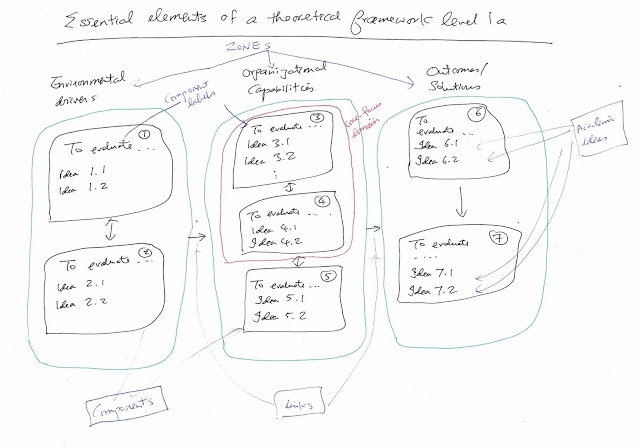The following five examples are on refining management-concerns diagram and theoretical framework level-0 variables in the subject of the agile literature review approach:
Related to management-concerns diagrams (3 examples)
Example 1: The initial variable formulation could be interpreted as "ABC's Ltd's brand management capability weakness", thus an "organizational capabilities" variable. It could also be conceived as an outcome variable. The refined one is more clearly an "environmental drivers" variable.
Example 2: The two initial variables are all about human resource management; they are consolidated and the focus on "competence" is also stressed, so that the revised variable is more clearly an "organizational capabilities" variable.
Example 3: the original variable does not appear as a solutions-related variable; it is revised to stress this nature with the phrase "the potential solution of the leadership training programme...".
Related to theoretical framework level-0 (2 examples)
Example 4: the original variable tends to put much attention directly on the topic of organizational agility; it runs the risk that the in the subsequent literature review, the two topics of external environment assessment and organizational agility competence will collapse into one topic. Thus, the component formulation needs to stress the environmental characteristics more clearly (that could then justify the need for organizational agility) (re: on organizational agility)
Example 5: The original zone 3 outcomes-related component is still not clear on what specific outcomes to evaluate on; one needs to bear in mind that management concerns could cover variables in other zones, such as environmental drivers and organizational capabilities. Also, many of the theoretical framework level-0 components are derived from the management-concerns diagram variables anyway. Their influences on this component are indicated in the arrows of this theoretical framework. The revised one is more specific what organizational outcome to focus on. In this case, it is the financial performance of ABC Ltd.
The examples above are not meant to be model answers, but are intended to point to ways to make the formulation of variables/ components (i) clearer in meaning and (ii) more appropriate to belong to a particular zone and, subsequently, to guide the ALRA research task requirements.
















